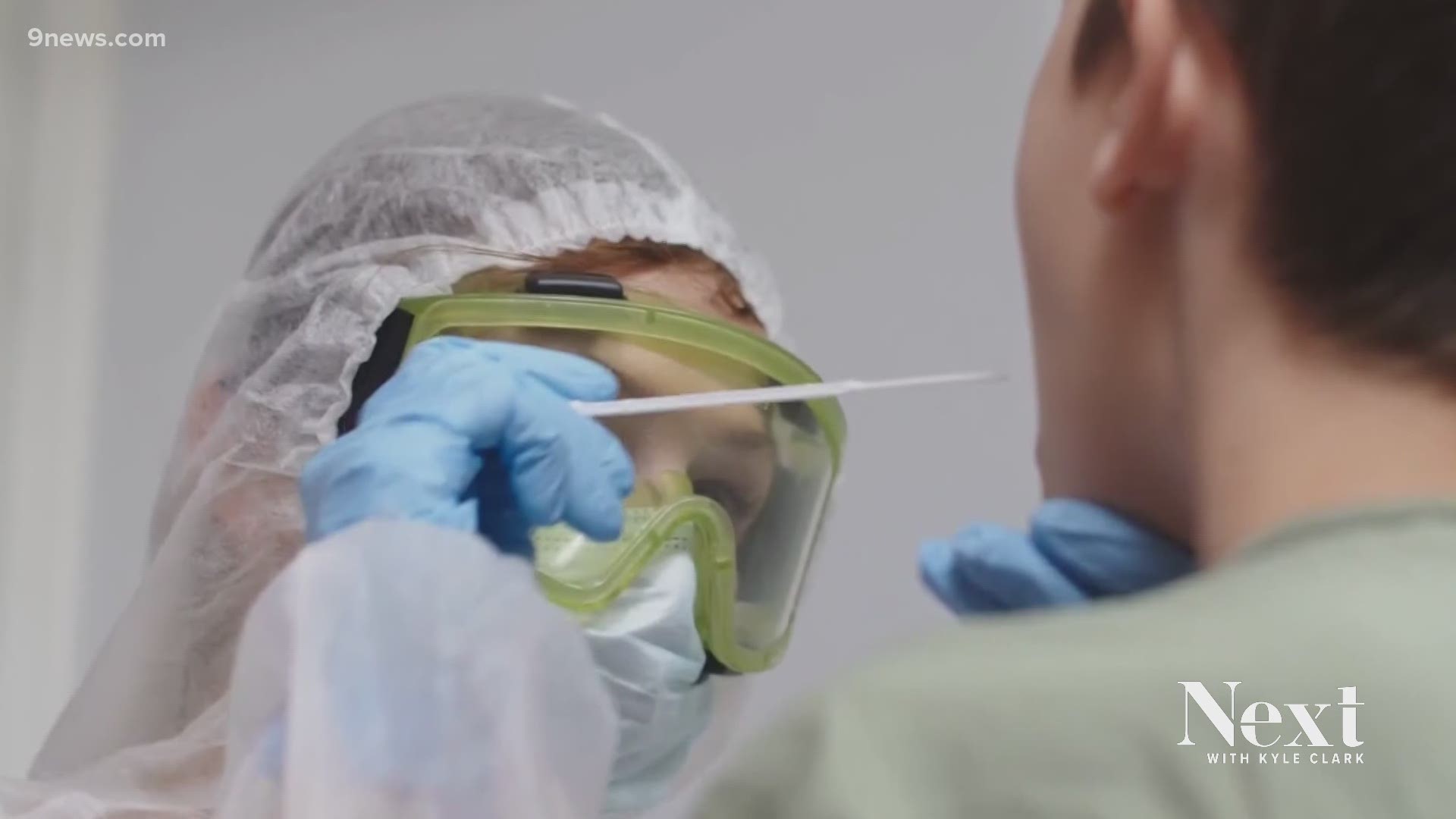DENVER — Colorado's COVID-19 positivity rate has been on a downward trend, with the seven-day average at 3.66% on Wednesday
Like the rest of the country, numbers have gone up and down since the pandemic began, but certain factors are playing into the recent statistics, including vaccinations.
We spoke with Dr. Michelle Barron from UCHealth and Dr. Bill Burman from Denver Health about the recent numbers.
What are the major factors influencing the trends?
Both doctors give kudos to Coloradans for doing a good job with COVID-19 precautions, saying it's playing a big role in decreasing cases.
The state also crossed the 1 million mark of giving out first and second doses of the vaccine. Barron believes we're already seeing the impact on positivity.
"Think about it," she said. "We vaccinated health care workers in late December. So we've actually had more than a month, and the [vaccine] numbers continue to go up. I believe it's having some impacts. It's not huge but definitely, I think there is some impact."
The state said there was a drop in cases over this past weekend, but many testing sites were closed because of the winter weather. Still, overall, the decrease in cases is continuing.
What other factors are at play?
Burman pointed to the number of people already infected with COVID-19.
"Because of the past year, we have a substantial percentage of the population that has been infected," he said.
Burman said after someone gets sick, they have some natural immunity that can help cut down transmission. Health experts do believe that natural immunity eventually fades.
Barron added that we don't know total how many people have been infected because not everyone was tested.
What about testing rates?
While the number of people being tested went up in the last two days, there has been an overall slow down in the number of people testing for COVID.
Burman offered some context.
"If the decrease in the cases was solely due to a drop off in testing, then you should see an increase in the percent positivity. We are seeing the exact opposite."
But before drawing conclusions, that requires some perspective.
"People aren't getting tested -- we don't know that they are positive," said Barron. "I'm not sure if that's because we are really seeing less cases and people are not symptomatic or people are just kind of over it."
Because we've seen positivity rates go up and down before and with health officials keeping a close eye on the variants, both doctors said COVID precautions and vaccinations remain critical.
CDPHE offered some more insight into understanding positivity:
When calculating the state’s positivity rate, the numerator is the number of confirmed cases with a reported date of that day, the denominator is the number of people receiving a molecular diagnostic test each day. So testing numbers have a direct effect on the state’s positivity rate."
A low positivity rate indicates that the level of COVID-19 transmission, relative to the amount of testing, is low at this time. Higher positivity rates can indicate increased disease transmission or the need for increased testing.
Anyone with symptoms should get tested as soon as possible and follow the instructions on how to isolate. Symptoms may typically appear 2-14 days after exposure to the virus. Learn more about testing at covid19.colorado.gov/testing.
SUGGESTED VIDEOS: Full Episodes of Next with Kyle Clark

